Close
Encounters of the Third Kind
1977
Director: Steven Spielberg
Starring: Richard Dreyfuss, Melinda
Dillon, Teri Garr, Francois Truffaut, Bob Balaban
In
the summer of 1991, my parents packed up our Dodge Caravan, threw me and my
sister in the back seat, and set off for a six and a half week cross country
adventure. We went from New Hampshire to
Kansas then got as far southwest as the Grand Canyon, then swung north to
complete our loop. I mention this
because a very significant, very important stop along the way was (as you’ve
hopefully figured out by now) Devil’s Tower National Monument in Wyoming. Naturally, one doesn’t go to Devil’s Tower
without understanding its cinematic significance, and that means that I had
already seen – and loved – Close Encounters of the Third Kind
by that early point in my life. I have
loved this movie a very long time indeed; it’s high time I try to do it some
justice in blog form.
[FAIR WARNING: I get a bit
spoilery in my discussion of this film, mostly because I love it and its finale
so much.]
Strange
things are happening. Military planes
reported missing in 1945 are showing up in the Mexican desert; ships are
showing up in Africa; sounds are heard over India; unexplained lights are being
seen over Indiana. Single mother Gillian
(Dillon) has her young son Barry taken from her by the lights in the sky. Regular family man Roy (Dreyfuss) witnesses
those lights first hand when he’s called by work to deal with a power
outage. His wife Ronnie (Garr) and
children watch helplessly as Roy becomes more and more obsessed with these
lights and the possibility that it might be aliens. Meanwhile, government agents, including
Lacombe (Truffaut) and his cartographer slash English interpreter Laughlin
(Balaban), are witness to the alien signals, and plans are underway as to how
to best deal with the possibility of an alien visit.
Close
Encounters of the Third Kind
is the embodiment of everything I think of when someone says “classic
Spielberg.” When I was younger, I didn’t
really understand what it was about Spielberg that set him apart as a director,
but in these last few years, after watching hundreds of films and writing about
hundreds of films, I understand better what the term “Spielbergian” means, and Close
Encounters has it in spades. It’s
in the nearly nonstop litany of gently comedic family moments (the toothpaste
one being very good), even as Roy’s relationship with his family
deteriorates. The use of the Budweiser
beer jingle on television being the in-scene musical accompaniment to Roy’s
breakdown, or how Barry’s childhood toys cheerily sing and clatter as he’s
being abducted. The amusing yet
threatening reveal of government agents rolling out in Baskin Robbins and Coca
Cola trucks. Spielberg is very good at
making you laugh while something serious is going on, better than any director
I can think of at the moment.
There’s
also no shortage of stunned awe in Close Encounters, something else I
consider “classic Spielberg.” Given that
this is a film about alien encounters, you would naturally expect a feeling of
bewilderment, but no one does bewilderment like Spielberg. Right from the get go, there are tons of
close ups on the faces of those who have encountered something they haven’t
seen before, and it is mostly through these, their reactions, rather than the
encounter itself, that Spielberg communicates the wonder of the
experience. We don’t really need to see
what Roy is seeing as long as we can read his awe in his face, all lit up and
smiling and wide-eyed. This sense of awe
is paid off in a big way in Close Encounters during the
conclusion, especially after Spielberg carefully makes you sit through Roy’s
anguish in the first half. Roy is so
utterly driven by something he doesn’t understand that it rips his family
apart; the sense of fulfillment when we finally get to see Roy get his
desperately sought answers is incredibly satisfying. He went through so much pain, it makes me
happy to see him so happy in the end.
Speaking
of Roy, his story drives Close Encounters, and I like that
it’s not a wholly happy one. Poor
Ronnie, watching Roy go mad. I’ve gone
both ways on how I feel about Ronnie; sometimes, when I watch Close
Encounters, I’m angry at her for not standing by her husband through a
difficult time. Other times, I feel
nothing but pity for her, watching her husband descend into what appears to be
lunacy, and finally having to strength to do what is most likely best for her
children. And frankly, that I’ve felt
both ways about her goes a long way towards the great characterization in Close
Encounters. Even though Roy gets
his wish at the end and finds his way to Devil’s Tower, I never forget that it
was at a cost. I always think of Ronnie
and Roy’s family, just as little Barry is reunited with his mother.
And
oh, the finale! Close Encounters has a
brilliant one. More often than not,
movie finales or climactic sequences are rather brief, maybe five to ten
minutes or so, and to be fair, this is usually appropriate. But Spielberg doesn’t cheat you in the
slightest on the finale of Close Encounters; it’s a full thirty
minutes and has its own smaller storyline.
I love the initial gasps and awe of seeing the first three alien crafts,
the tension of communicating with them through music, and the complete joy when
they answer back. Like the government
agents and scientists who applaud and cheer when those three ships fly off, you
think the encounter is over and it was a success. Ha ha ha, thinks Spielberg, you ain’t seen
nothing yet! There is the “light show,”
and then the mother ship, and then the abductees – another great fake out by
Spielberg, when you’re expecting to see aliens – and then finally, finally we
get a glimpse of the aliens themselves.
The finale builds its own tension throughout and it’s just
marvelous. It’s a spectacular final act.
I’ve
also long had a fascination with codes.
Some of my favorite stories, books, television episodes, and films have
to do with cryptography. I think that “The
Janus List,” the season 3 finale of Numb3rs,
is, frankly, one of the best hours of television I’ve ever seen because it’s
ENTIRELY to do with codes and code-cracking.
Suffice it to say, a lot of my fascination with this stems from my early
introduction to Close Encounters, and the scene where Laughlin the cartographer
deciphers the alien message (and then the unforgettable rolling of the globe
down the hall) is memorable in the extreme.
But it’s not just that scene in Close Encounters that deals with
codes, although that one is the most direct.
The entire film feels a bit like decryption; Roy must find it in himself
to figure out “what this means.” It’s
not a literal code, but an emotional one.
He’s been sent a message in his soul, and he has to somehow determine
its meaning, and by god, I love watching him do it.
Apart
from the very good Gustav Holst John Williams score (OH SORRY NOT
SORRY), Close Encounters is also fucking awesome for having one of the
most ingenious uses of film music of all time.
Once, on my old site, I wrote a series of pieces about the different
ways films use music and my favorite examples of them. The way I see it, there are four different
categories of music in film: the film musical, the original film score, the use
of previously written music as a scene accompaniment, and “in-scene” music,
where characters produce or interact with the music in some way. It’s in this last category that Close
Encounters excels. Being a
musician and a lifelong fan of music in general, I adore the conceit that human
beings use music to communicate with alien life. That music is truly universal. Written and spoken words have their role, but
when encountering beings so incomprehensibly different from us, music makes such
perfect sense as a means of reaching out.
The theme is lovely and simple as well, and who doesn’t love it when the
alien ships finally respond in kind?
Additionally,
Close
Encounters remains a big reason why I will always irrationally love Francois
Truffaut and his movies, and why I’ll always be willing to cut him all kinds of
slack. Richard Dreyfuss may be the hero
of the film, but Truffaut steals the show.
His character has such an aura of powerful calm, and he’s the guy who
stands up for those called by the aliens in the end. He is empathy and tolerance embodied. He is goddamned cool. How amazing that Truffaut agreed to be in
Spielberg’s film, and what a great job he did with such a cool character. (Plus he has one of the most awesome lines of
the film – “They belong here more than we.”)
It’s
one thing to talk about favorite movies, and another to talk about favorite
movie scenes. While I truly love Close
Encounters, I don’t think it would make a list of my Top Ten Favorite
Films. It does, however, have the honor
of having one of my Top Ten Favorite Scenes.
I’m not even entirely certain why, but the relatively short scene where
Lacombe and Laughlin go to India and hear the people chanting in harmony and
ask them where the sounds came from gets me every time. Every damn time. It sends shivers down my spine and brings
tears to my eyes. There’s something
about the men singing, so insistently, so beautifully, and it’s the first
introduction of the musical motif in Close Encounters. It finishes with the absolutely perfect shot
of all the people pointing up to the sky.
I love that scene. Absolutely
love it.
Finally,
I have to mention the general treatment of the concept of the close encounter
in this film. We have plenty of movies
where aliens land on earth and then promptly proceed to blow it up. Close Encounters couldn’t be further
removed from these types of films. Everything
about alien contact is treated with gravity and seriousness; all right, so
Spielberg injects some of his trademark humor, but it never cheapens the
experience of making contact. Few films
have had the courage to approach this topic with such seriousness (Contact
and The
Day the Earth Stood Still spring to mind), and even among this small
pool, Close Encounters is different because of how positive and optimistic
it is. Whereas The Day the Earth Stood Still
is (somewhat) realistic, it is also incredibly downbeat about human beings’
abilities to maturely communicate with life beyond the planet Earth (to be
fair, with definite justifications). It’s
uplifting, then, to watch humanity play out an entirely different tale in Close
Encounters, one that shows that we CAN man up, so to speak, and not
immediately default to violence and warfare.
That we have it in ourselves to have a peaceful interaction with
something utterly foreign. Close
Encounters is a message of hope.
In
my humble opinion, this is Spielberg at his finest. Spielberg has shown in the last two decades
that he is obviously capable of doing gritty, violent, and realistic dramas (Schindler’s
List, Saving Private Ryan) but… I think I prefer younger Spielberg for
sheer entertainment value. Think Jaws,
think Raiders of the Lost Ark, think Close Encounters. The sheer joie de vivre in these films is off
the charts. They are all engaging and
entertaining, and they are everything that makes watching movies fun.
Arbitrary
Rating: 10/10. Duh.
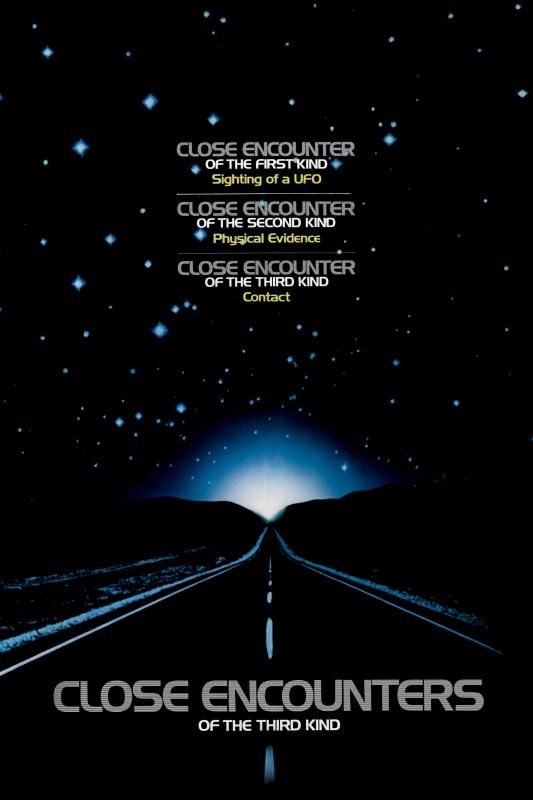
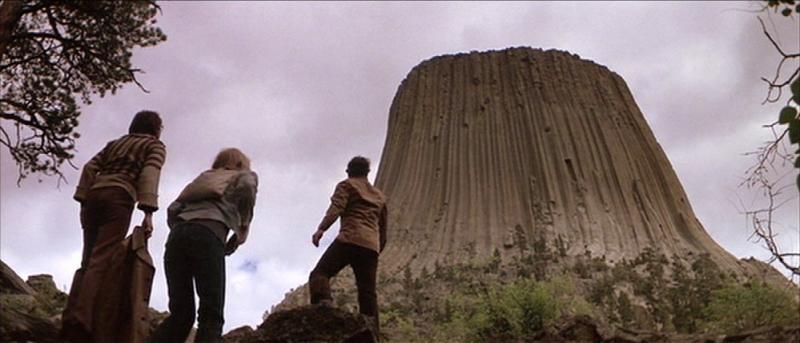
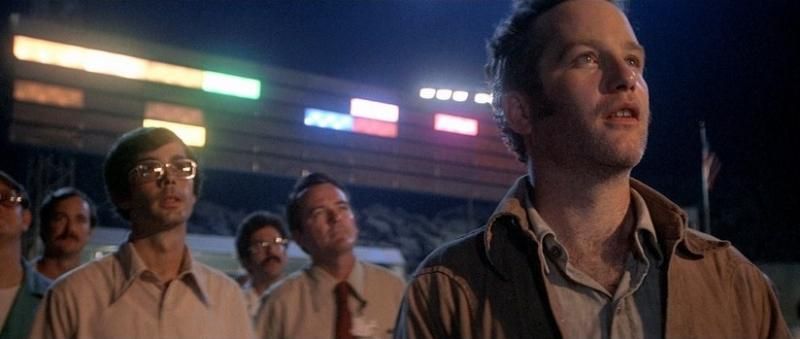
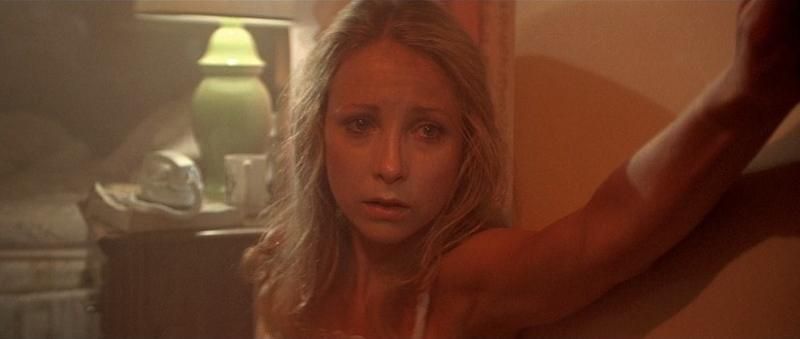
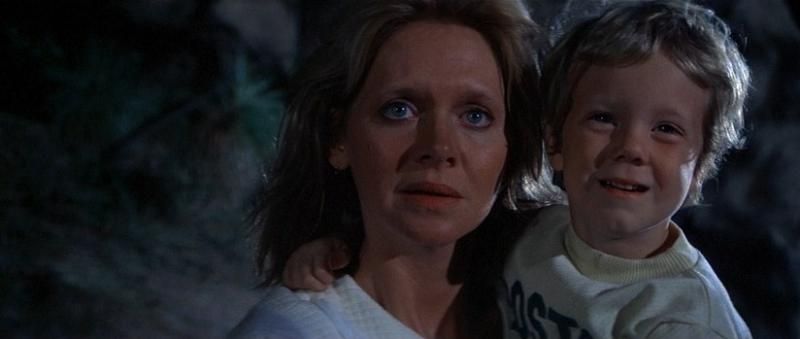
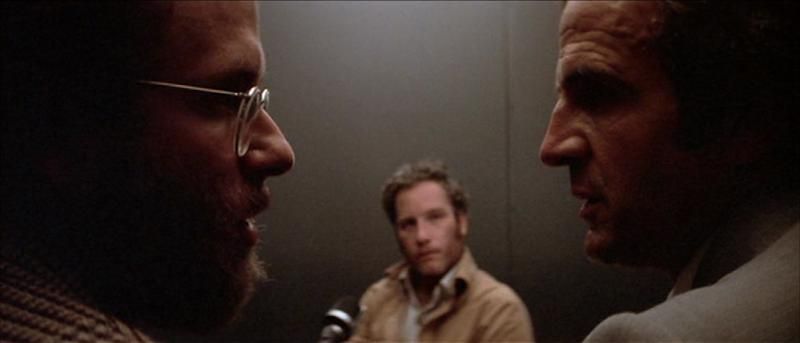
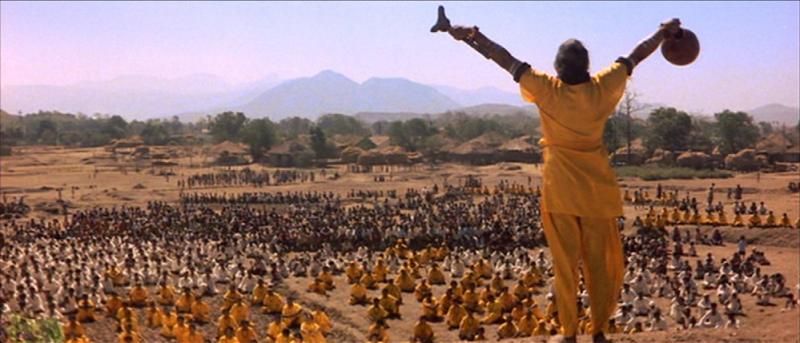
I was pleased when I got around to re-watching this because I remembered liking it and hadn't seen it in years. I forgot just how amazingly good it is. So good. So damn good. It has so many elements of other genres in it that all come together perfectly.
ReplyDeleteIt's easy to forget this in Spielberg's filmography because he has so many good ones, but it's as good as his best films. And damn, those five tones are really something special.
I agree that Close Encounters tends to get a bit overlooked. It's not part of a film series, and everyone always remembers Jaws and ET before this one. WHY? But jesus, it's good. I loved it as a kid and I love it as an adult, and there aren't many films that can survive that transition without relying on nostalgia.
DeleteLike I mentioned, I actually welled up a few times while REWATCHING it, not because the scenes were sad, but because the movie was so good, I could only cry out of sheer movie-viewing joy.
My sophomore year of high school, our marching band did a sci-fi themed show. Our warm-up was the five tones from Close Encounters. (I was playing cymbals that season, and my favorite bit of the show was when i got to do awesome cymbal crashes during Darth Vader's Imperial March.)
My favorite scene is when Dreyfuss is lost on some back country road, a truck comes up behind him, we see the headlights, he waves it by, we see the lights turn sideways as the truck goes by, a second truck comes up behind him, we see some fancy headlights, he waves it by...then the lights rise vertically out of the frame.
ReplyDeleteBy the way, if you haven't seen the 2011 movie Paul, I think you'd like it. It was done by people with an obvious love for Close Encounters, Star Wars, and E.T. Here's my review of it, if you are interested: http://tipsfromchip.blogspot.com/2011/04/movie-paul-2011.html
I love that scene you mention. It's such a smart scene. As a viewer, I can sense what's coming with the lights, but it's still SO DAMN COOL when it does.
Delete(I also love that scene because that's where Richard Dreyfuss calls the other driver "TURKEY!!!" I need to work on bringing back that particular insult.)
Thanks for the rec! I haven't heard of Paul.